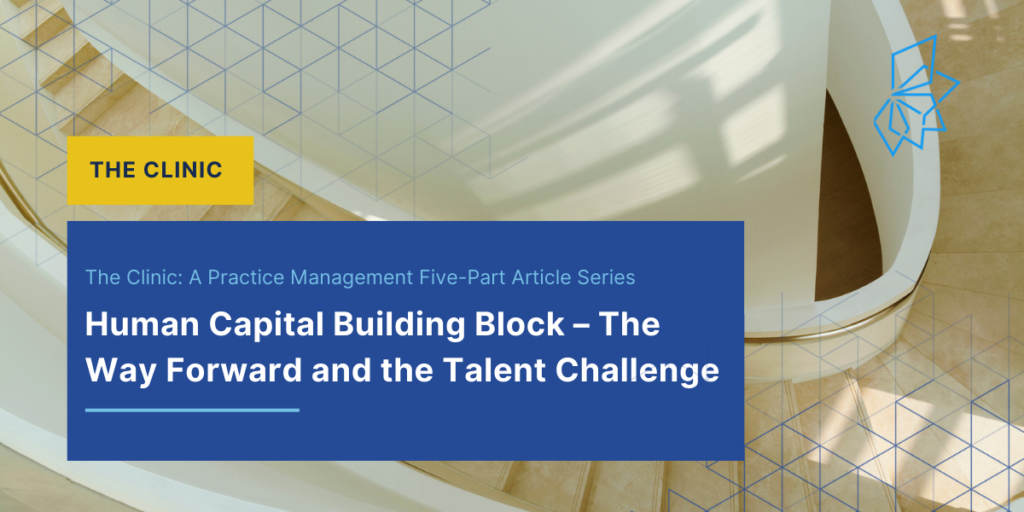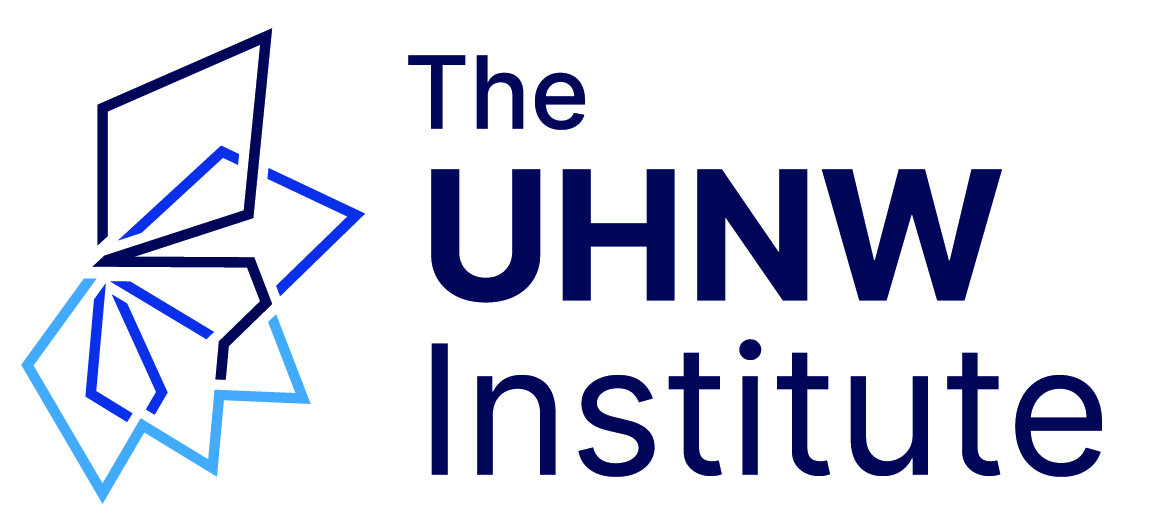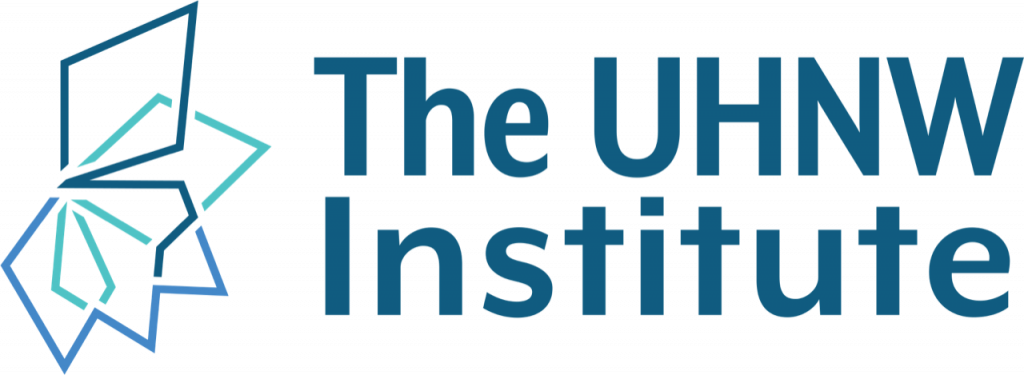
Welcome to The UHNW Institute’s ‘The Clinic’, a new five-part series aligning with thought leadership and lessons learned from our bi-monthly Practice Management Clinics. The virtual Clinics enable Institute members to explore the group’s priorities among the building blocks of practice management, building new skills and operationalizing best practices.
This Institute initiative organizes the ‘Building Blocks’ of Practice Management along four main pillars: human capital, service, sales and marketing and business management, with an additional section dedicated to technology.
This debut article features ideas, topics and challenges from the Practice Management Clinic held on January 17, which focused on the Practice Management Building Block of Human Capital.
We invite members to contribute their thoughts, insights and suggested resources on the topics listed below by participating in the Institute Community Forum discussion on Human Capital here.
To learn more about our ongoing Practice Management Clinic sessions click here.
Please note: Topics, recommendations, lessons learned and best practices described below came from the discussion of industry professionals with expertise who have worked in the field for at least two decades. The information is shared for informative purposes only; we make no representation or warranty of any kind, express or implied, regarding the accuracy, adequacy, validity, reliability or completeness, and your reliance on any information is solely at your own risk.
Practice Management: Human Capital Building Block – The Way Forward and the Talent Challenge
By: Stephanie Gromek, Managing Partner, BBR Partners and Chair of the Practice Management Initiative, The UHNW Institute
Integrated Wealth Management: The Way Forward & The Talent Challenge
The wealth management industry is in the middle of an evolution: In the face of increasing complexity and choice, clients need responsive, personalized advice buttressed by solid technical expertise. Enter the rise of the ‘Expert Generalist.’ Combining emotional and cognitive intelligence, these professionals provide tailored advice, process intricate details, coordinate with outside providers and manage execution. They combine comprehensive knowledge with empathy and are equipped to meet the needs of discerning clients, providing tailored, practical counsel. Today, for firms serving these clients, the demand for these capabilities outstrips the available talent supply. Cultivating these Expert Generalists requires a deep investment in talent acquisition, development and retention. How should firms approach this challenge, and what are some best practices to employ?
Talent Recruitment and Assessment: The Culture-Fit Conundrum and Assessing Potential
While skills are important, finding suitable candidates goes beyond skill-matching. Successful recruitment is about finding and attracting candidates who will appreciate and thrive in your organization’s culture and have the potential to grow into the Expert Generalist role. Creating an authentic portrayal of your firm’s culture during recruitment can lead to more suitable hires. For example, if your firm is strongly committed to sustainability, highlight this to potential candidates. Experience has shown that candidates are drawn to your culture when accurately represented and are more likely to stay longer and be more engaged in their work.
After attracting candidates who will thrive and help build your culture, you must then assess whether they have the motivation and variety of raw skills necessary to grow into the Expert Generalist role. Such skills might include perceptivity and a desire to listen, the ability to master a learning curve quickly, or the capability to summarize complex information succinctly and teach it to others. The core component of this assessment is a high-quality interview process, involving multiple people from your firm, utilizing behavioral questions that focus on the heart of the skills you seek to identify. Additionally, having candidates participate in a case study or provide a real-time work opportunity is a way to get first-hand insight into their knowledge base and approach to problem solving. While tools such as Hogan and the Predictive Index may help gauge certain abilities, behavioral preferences or motivations, many firms prefer to use these tools only to identify information that supports what is experienced through a high-quality interview process or uncover additional areas for further exploration.
Importantly, all decisions in a recruiting process have potential to be influenced by unconscious bias. There are ways to adjust the process to mitigate this risk. For example, you could present case studies without names attached or you could require training for interviewers that teaches them to recognize their potential biases and use questioning methods that give equitable opportunity for candidates to share their qualities.
Employee Retention and Development: The Empowerment Equation
Once you have the right people on board, how do you develop and keep them? Clients are hiring firms to serve not just their own needs but for their family’s future generations. How do we build multi-generational firms of Expert Generalists that will meet those needs?
The first key ingredients are a distinctive purpose and a clear set of values that drive behavior and are embodied by the leadership team. Strong talent will grow when they have a clear sense of the vision leaders have for the firm. Clarity allows for creativity and risk taking.
Retaining employees in wealth management depends on empowering them and giving them access to technical training. It is important that deep technical expertise sit within the firm and that there are opportunities for learning and leaning on those technical experts who can help build the knowledge capital of employees. In addition to sound expertise, there is high return on providing opportunities for employees to grow through experience. Firms that give junior employees client-facing roles and business-building responsibilities from the start are able to coach employees as they find their style, have successes and make mistakes. This firsthand apprenticeship relationship allows employees to witness advising in action and helps demonstrate the qualities of an Expert Generalist. Participating in these interactions with clients accelerates their effectiveness and keeps them engaged. Employees who benefit from client interaction early will more quickly understand the commercial impacts of their day-to-day work and feel tied to the firm’s objectives. They are less likely to leave, and their motivation and productivity rise. Additionally, focusing on providing clear career progression paths, opportunities for mentorship and continuous education significantly enhances job satisfaction and loyalty in the team.
Much research has shown that employee satisfaction at work is directly related to the personal relationships and ties they feel they have at work. Cultivating a culture where people care about one another and enjoy spending time together outside of day-to-day tasks isn’t just the right thing to do but provides positive ROI.
Lastly, while development opportunities and close relationships are key to retaining people over the long term, creative compensation and benefits that align employee success with the firm’s objectives are equally important. There is a growing body of research showing that benefit programs that meet the needs of different employee demographics (such as tuition support for continuing education or fertility assistance) can be a powerful loyalty builder. Creative profit-sharing and equity-like structures are an important way to tie individual achievement to the performance of the firm and focus employees on the long-term impact of their work. This requires current owners to adopt a long-term perspective and recognize the value in sharing economics with employees who will be generational advisors and leaders.
Diversity, Equity and Inclusion: The Game-Changer
The wealth management industry has been slow to diversify, but change is underway. We know that firms whose teams include diverse perspectives perform better than those that do not, and clients will continue to expect teams to reflect a variety of experiences. Diversity brings fresh perspectives, innovation and drive that help transform business performance. The first challenge is to attract diverse employees, but retaining them is critical and sometimes overlooked. Firms that create a culture where employees feel a sense of belonging and can meaningfully contribute are already seeing remarkable results. Valuing the uniqueness of each employee and creating a psychologically safe work environment is the key to retention. It is imperative that managers and leaders self-reflect and become intentional about learning how to coach and support people who may be different from them. Once a team of diverse leaders is built and sustained, ongoing attraction of diverse talent becomes easier. This will require sustained, long-term effort focused on pipeline cultivation, firm self-reflection, employee development and retention.
Challenges in Talent Acquisition and Management: Investing Limited Resources
Small firms face unique challenges, primarily due to resource constraints. As a small team primarily focused on delivering client results, it’s difficult to implement the ideas shared here. Often, this leads small firms to start HR efforts out of necessity, focused on process and administration. Instead, firms should lean into human capital efforts in areas that will drive the most impact over time. An alternative approach is to outsource basic HR functions or utilize tech-based solutions and instead add an “HR Expert Generalist.” This approach allows a firm to do more with less and invest the limited resources into high-value talent acquisition, retention and development efforts.
The integrated wealth management firm of tomorrow will need Expert Generalists to meet the needs of demanding clients. Creating a consistent, high-quality client experience requires firms to invest now in building those teams. The journey to building long-lasting effective teams is multifaceted and complex. But with the right approach to identifying, recruiting, developing and retaining talent, firms can successfully navigate the evolving landscape to best serve future clients.

